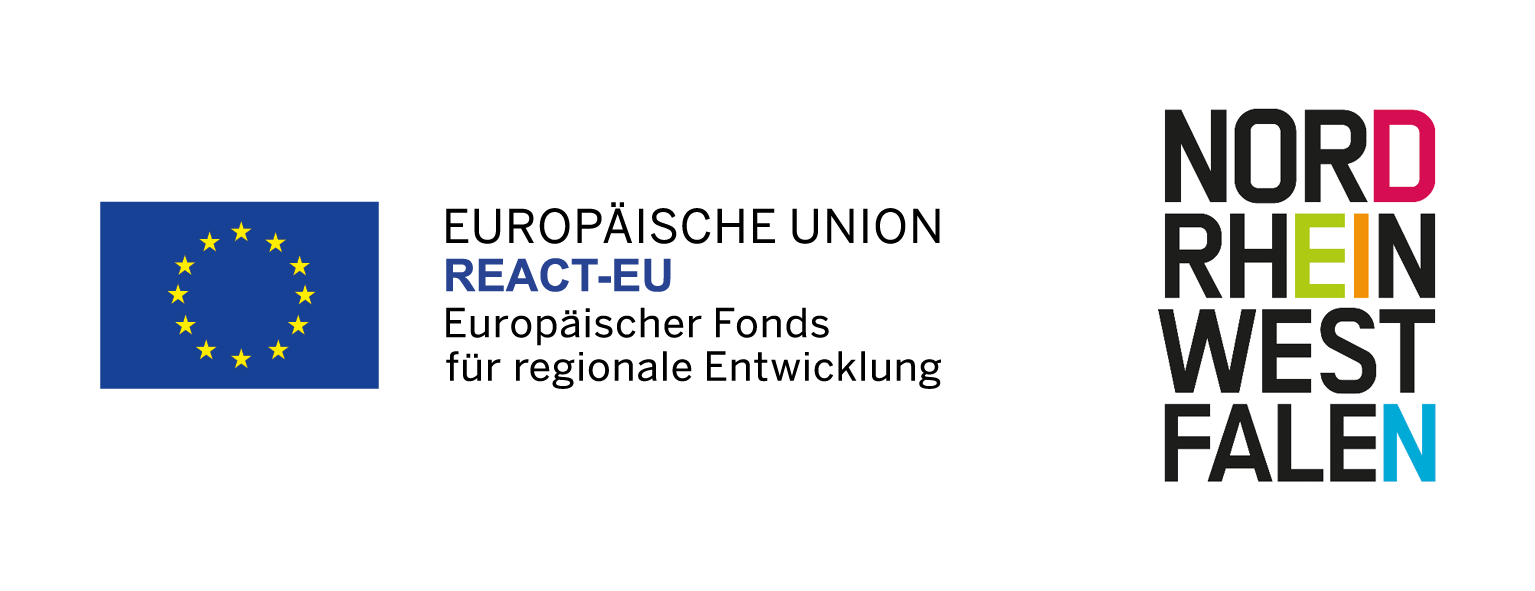
Six champion churches across Düsseldorf

From the copper plate dome to the Romanesque arrow basilica
Churches in Düsseldorf hold some architectural surprises in store. But one thing first: we cannot compete with our beloved neighboring city of Cologne in terms of sacral superlatives. Cologne Cathedral is unbeatable in this discipline. But Düsseldorf also has places of worship that were built before the city was founded and set standards in a variety of ways - whether with their avant-garde architecture, their sometimes surprisingly "profane" details or their testimony to the older and more recent history of the state capital. What you may not have known: Even away from the old town and the city center, there are many reasons for a loud hallelujah.
St Rochus
With its Kolbe Cross, sculpted by Düsseldorf artist Bert Gerresheim and attached to the outside of the tower, the Rochus Church aims to make sure that the crimes of the Nazis are not forgotten. It is also an avant-garde example of post-war sacred architecture. On arriving at the junction of Prinz-Georg-Strasse and Bagelstrasse, your eyes are immediately drawn to Gerresheim’s vast Christ figure, whose left forearm bears the prisoner number of Maximilian Kolbe, a Franciscan friar and publisher who was sent to a concentration camp. The tower on which the cross is installed is the last remnant of the mighty neo-Romanesque church that once stood here and was badly damaged during the Second World War. In its shadow, an unexpected sight awaits: a domed church consisting of three slim parabolic bowl shapes covered in copper tiles that was built in 1955 to designs by Düsseldorf architect Paul Schneider-Esleben. The church reaches upwards like an egg, and it quickly acquired the nickname ‘Hallelujah Gasometer’ among locals. Inside the building, a statue entitled Triumphant Christ by Beuys’ tutor Ewald Mataré is suspended between twelve steel concrete pillars that support the dome.

(Photo: Holy Trinity Catholic Parish)
St Maria Coptic Bunker Church
St Maria Coptic Church, formerly St Sacrament, is located in the district of Heerdt and is most probably the most solid church in the world. Why is that, you may well ask. Well, its plot originally belonged to the church but was seized by the Nazis, who built an air-raid shelter disguised as a church. Shortly after the end of the war, the Catholic priest Carl Klinkhammer took the practical decision to have the bunker converted into an actual church. The ceilings between the floors were demolished, windows were added, a nine-meter-high altar wall was built and a belfry was placed on top. In 2015, the previously Roman-Catholic church was handed over to the Coptic-Orthodox community. In the cellar, the original air-raid shelter spaces remain intact, providing a reminder of the past.

St Suitbert
The entire Kaiserswerth district, idyllically located on the banks of the Rhine, is an exploration of different epochs. At the end of the seventh century, the missionary Suitbert established a monastery on what was then an island in the Rhine – the origins of what was later to become Kaiserswerth. The Church of St Suitbert in its current form is thought to date from the eleventh century. The triple-naved, pillared basilica is home to the richly decorated Suitbert shrine, one of the Rhine-Meuse region’s most important medieval reliquaries. On the exterior wall, a bronze relief by Bert Gerresheim commemorates Friedrich Spee’s battle to end witch-hunting. The idyllic Stiftsplatz square on which the church stands is dominated by canons’ houses from the 18th century, while a Romanesque house from the 13th century forms part of the outer edge. But your tour back in time doesn’t end there, as after visiting the church and strolling through the more worldly part of Kaiserswerth’s historic centre, you should also take in the ruins of the Kaiserpfalz, or imperial palace, next to the Rhine.

St Matthew
When it comes to modern church architecture, Düsseldorf has another ace up its sleeve. The Church of St Matthew’s – designed by Gottfried Böhm – makes a real statement. This ensemble of buildings in the city’s Garath district looks more like an interlocking sculpture than a Catholic place of worship. In fact, Böhm was also a sculptor as well as the first German winner of the coveted Pritzker Architecture Prize, which he was awarded in 1986. St. Matthew’s is unashamedly a work of art in itself. The concrete blocks with their red and blue accents are reminiscent of a Mondrian painting. The brutalist architecture incorporates castle-like brick walls with round towers at the corners, while the roof features lead cladding. It sounds crazy and it is. The interior is dominated by alcoves, galleries, balconies and openings. Here too, the design aesthetic is radically modern. But that is to be expected as the church was built between 1968 and 1970 at the same time as the Garath district, which was designed from scratch.
St Martin’s Old Church
A sense of history often pervades churches, and St Martin’s Old Church in Düsseldorf’s Bilk district is no exception. Not only is it old by name, it is also thought to be the oldest church in the state capital. Its first mention in the records was in 1173, but buildings excavated on the site go as far back as the eighth century. When you enter the triple-naved, pillared Romanesque basilica, which today stands on the corner of Martinstrasse and Bachstrasse, you can admire a number of frescoes from the 13th century. This historic treasure was not always shown the respect that it was due, and for a while St Martin’s Old Church lost its function as a parish church and was used as a barn by a textile company. Following extensive renovation work, the Catholic St Boniface community and the Protestant Lutheran community now regularly hold services here. In front of the little church, you’ll find the original telescope from Bilk’s observatory, which once stood nearby but was bombed out during the Second World War.
Andrew the Apostle
Understanding among nations, with God’s blessing. This church in Düsseldorf’s Hassels district exemplifies the desire for integration and how it can be achieved. The exterior of the domed building cuts a striking figure as you arrive. This Greek-Orthodox church was consecrated in 1989 and is situated next to the A46 autobahn. Inside, there’s barely an inch of wall or ceiling that hasn’t been decorated, and the wealth of icons and paintings is a sight to behold. Four nuns from Crete spent years adorning the church with frescoes in the Byzantine tradition. It’s worth taking a closer look. Among the images of saints highlighted in gold, you’ll discover the secret of a successful cultural crossover: Up high in the dome, Mary sits in splendour over a city that is clearly recognisable as Düsseldorf. The castle tower, the Rhine, the Schauspielhaus theatre, Benrath Palace – they’re all there. Düsseldorf must be the only city in Germany whose landmarks have been immortalised in an Orthodox church.
Title image: Düsseldorf Tourism
This article is supported by REACT-EU.




